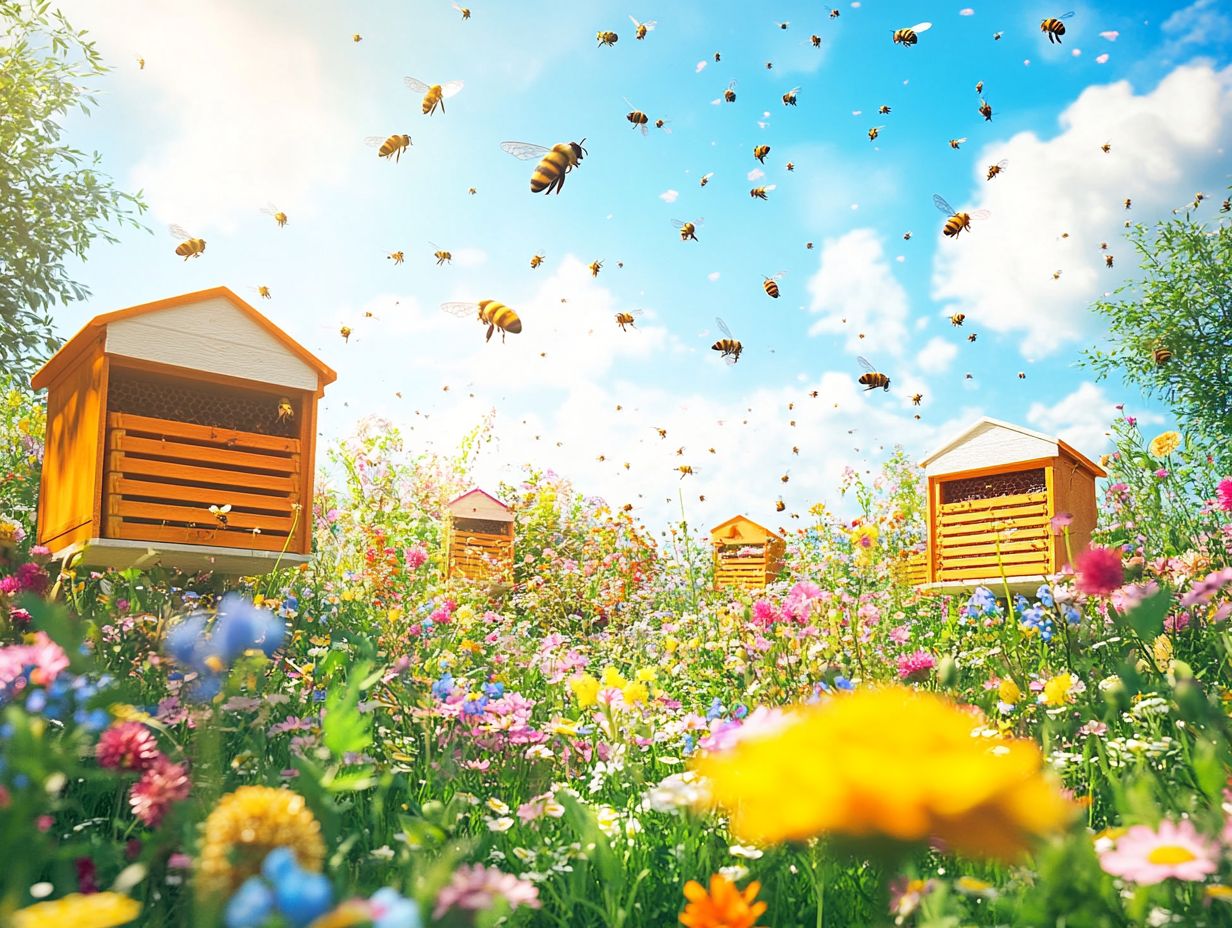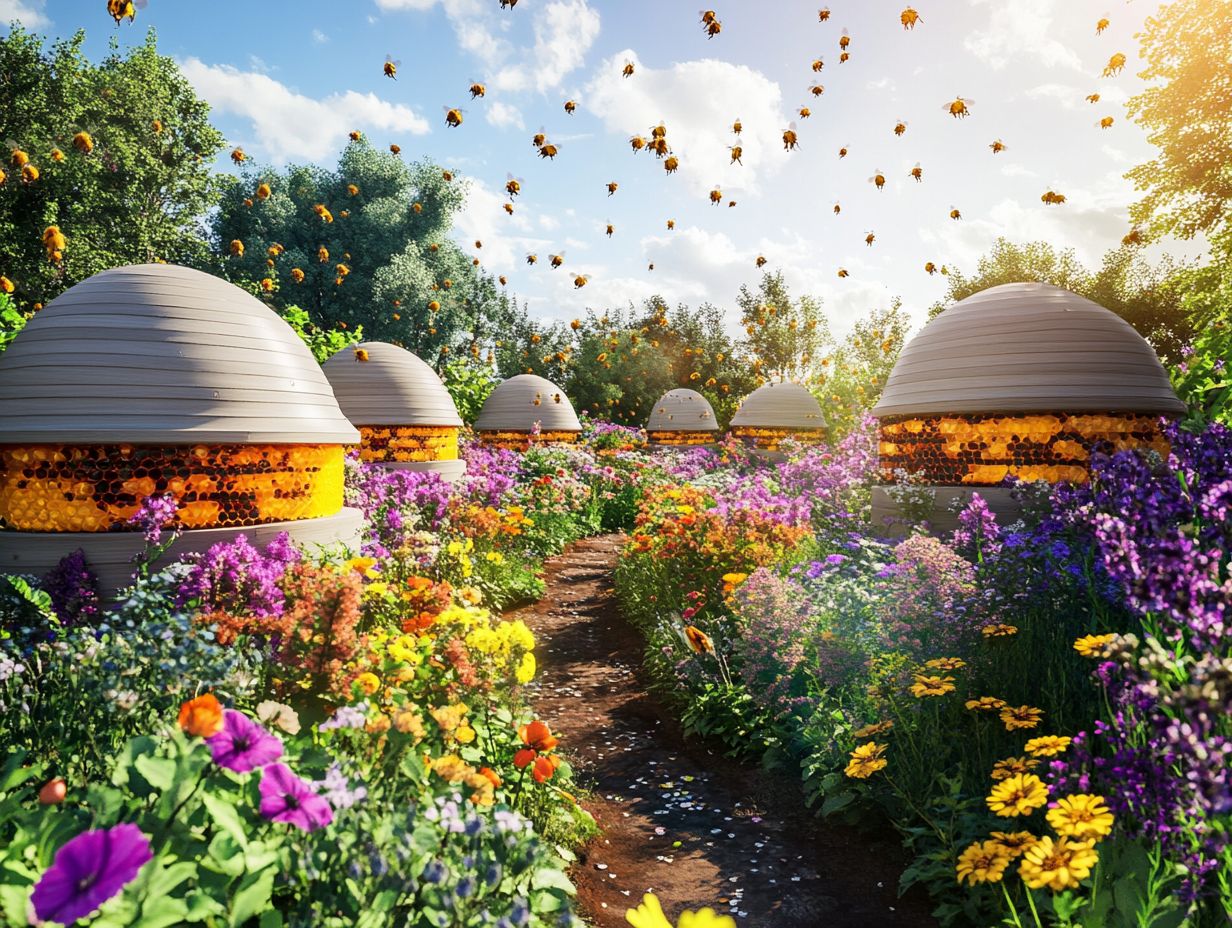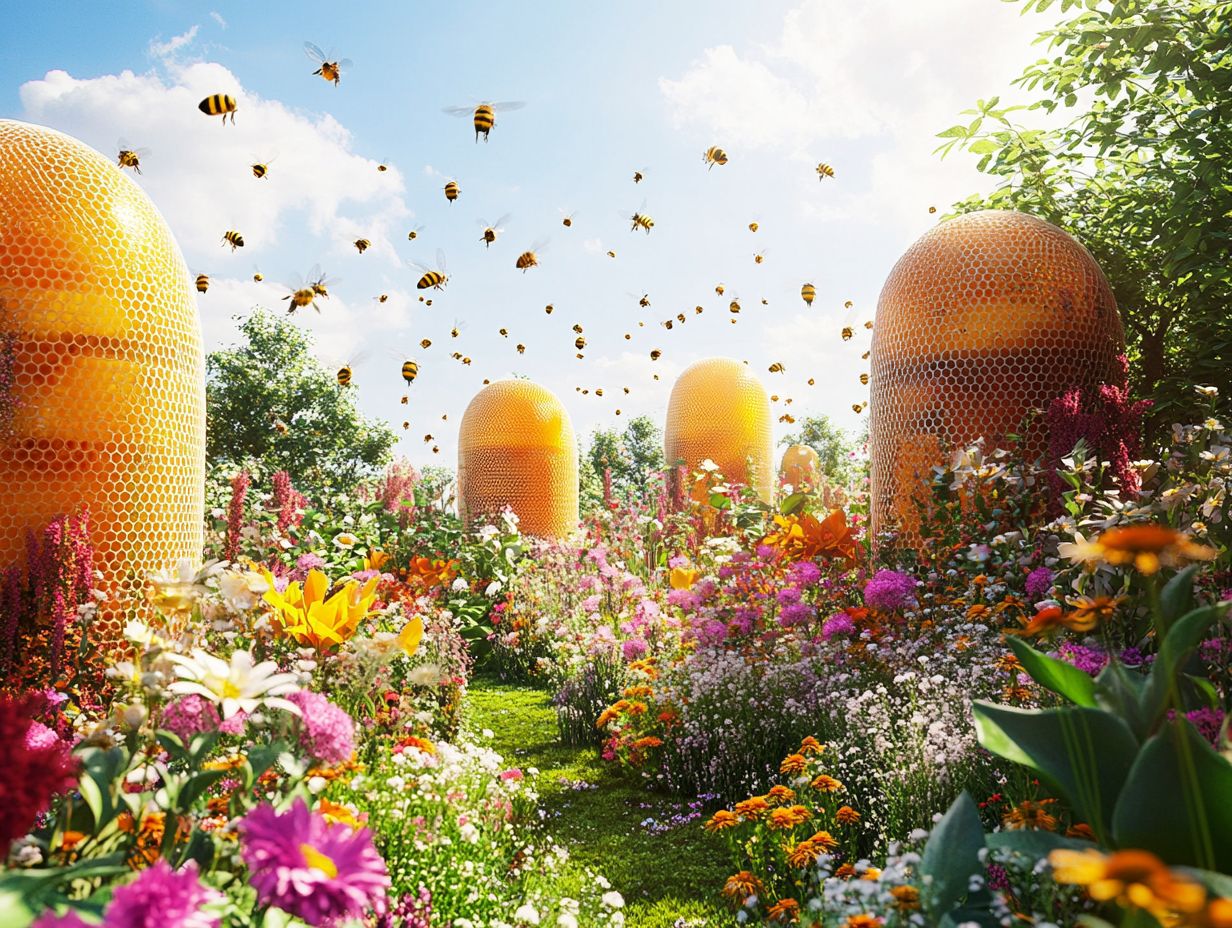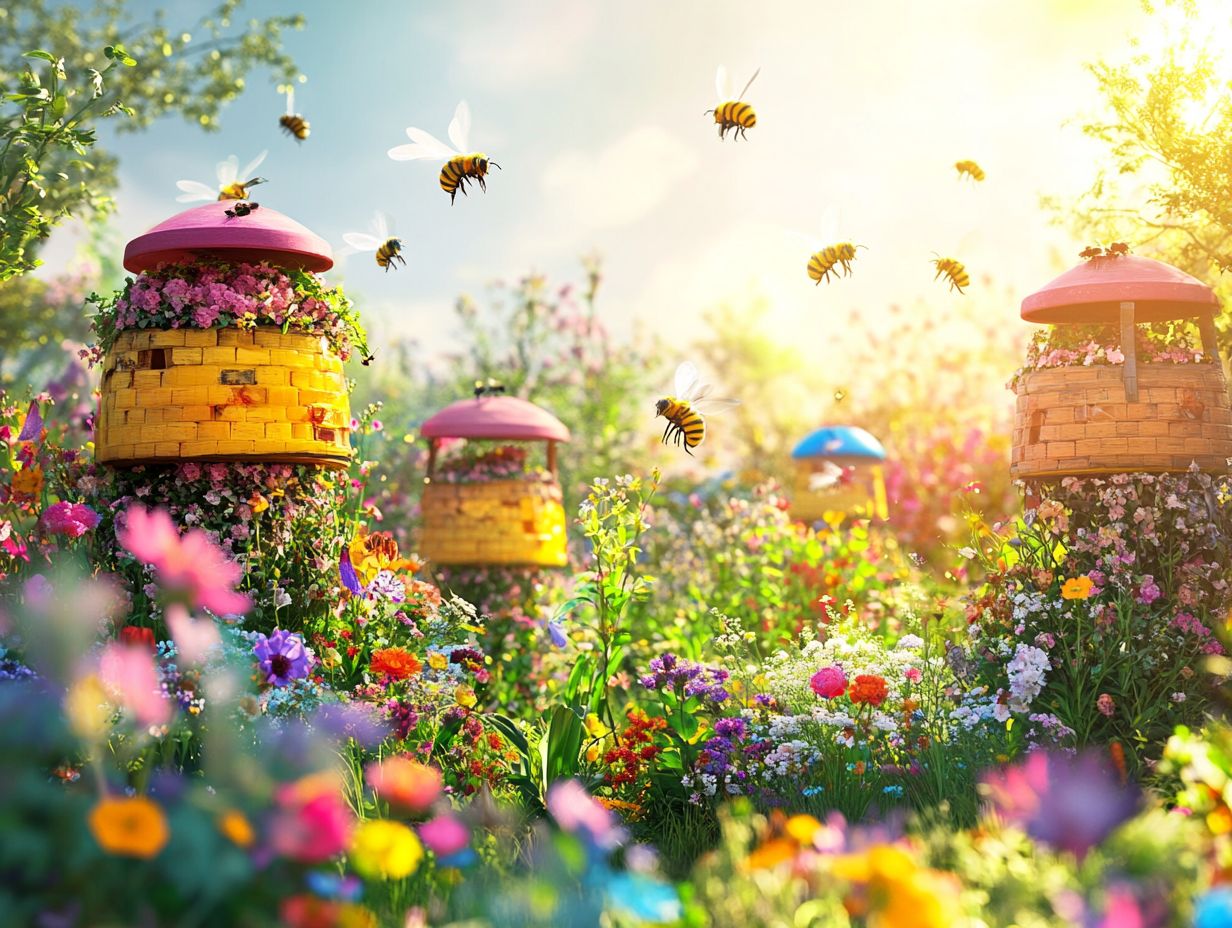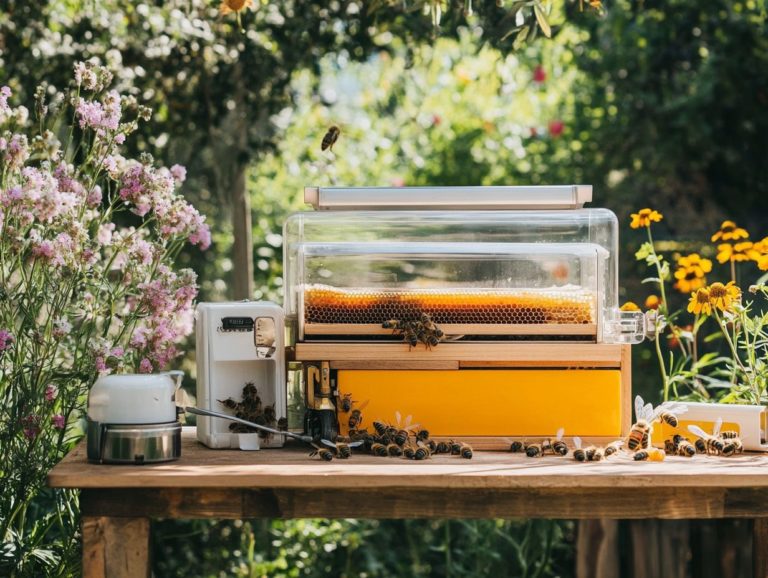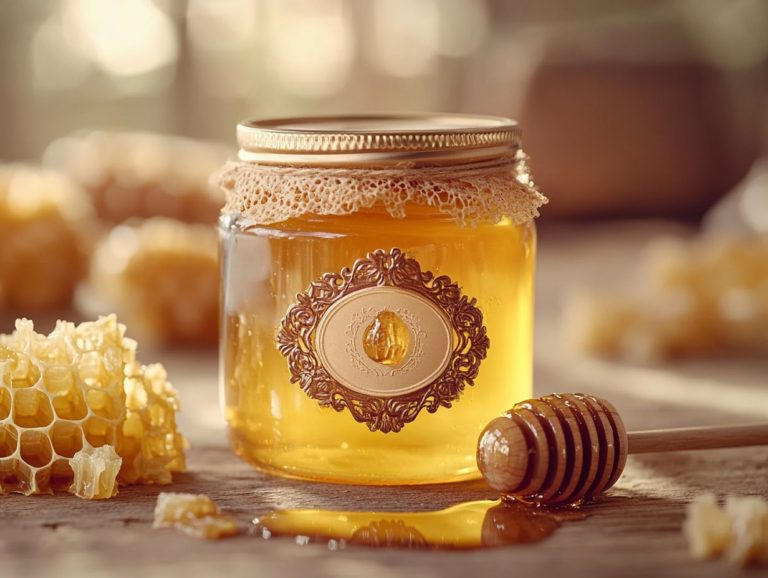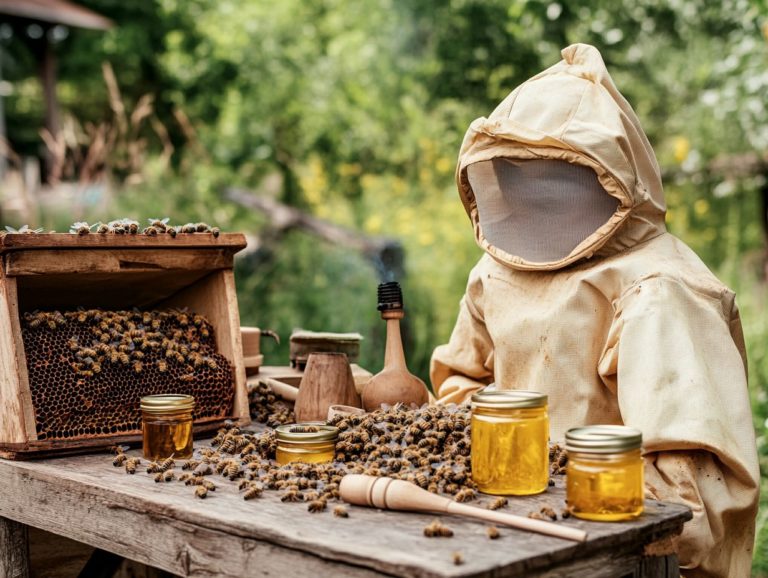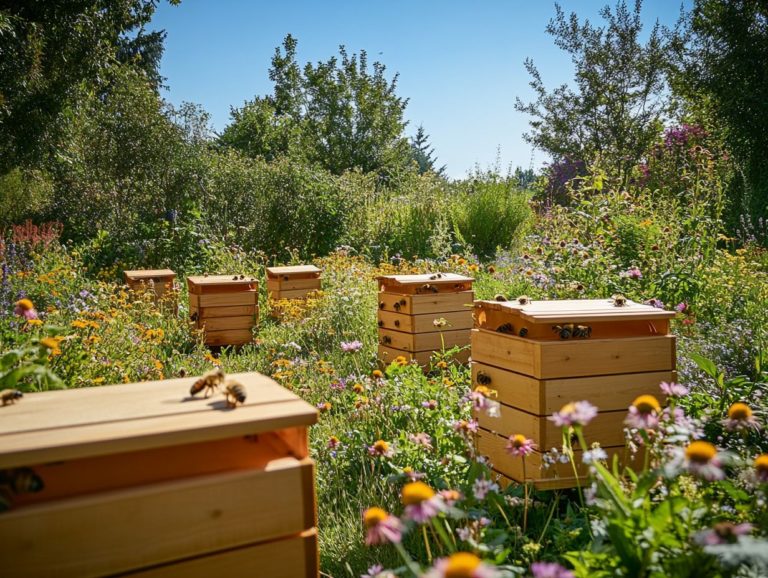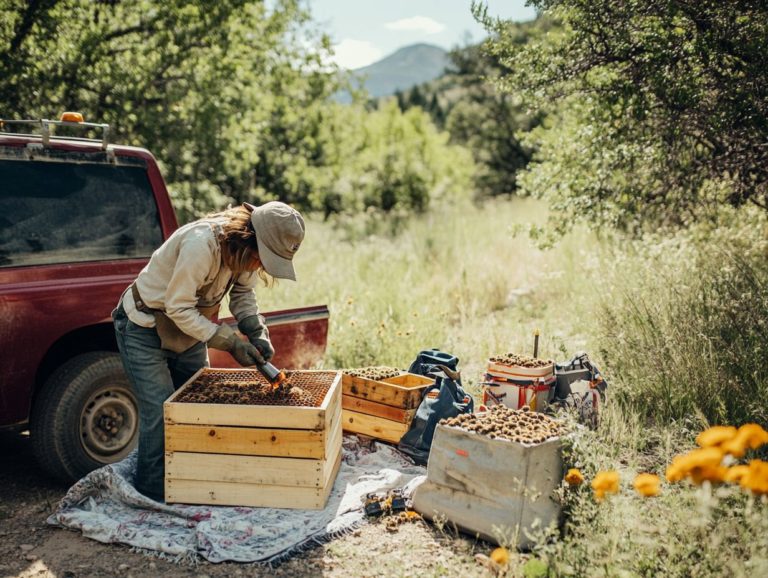The Benefits of Using Plastic Hives
In the world of beekeeping, selecting the right hive is paramount for the health of your bees and the efficiency of your honey production.
Plastic hives have surged in popularity, bringing distinct advantages that set them apart from traditional wooden hives.
Let’s dive into the exciting world of plastic hives, exploring what they are, how they’re constructed, and their benefits. These hives offer remarkable durability and effortless maintenance, making them a cost-effective choice for beekeepers.
We will also address potential drawbacks, compare them with wooden hives, and offer crucial tips for effective use. Explore the insights within to determine whether plastic hives are the ideal choice for your beekeeping journey.
Contents
Key Takeaways:
- Plastic hives are lightweight and easy to handle, making them a convenient choice for beekeepers.
- Durable and long-lasting, plastic hives require less maintenance and can withstand harsh weather conditions.
- Compared to wooden hives, plastic hives are easier to clean and provide better insulation for bees, helping them thrive, especially during honey harvesting.
What Are Plastic Hives?
Plastic hives have emerged as a remarkable innovation in the beekeeping realm. They present a contemporary alternative to traditional wooden hives and offer apiary supplies that cater to modern needs. In your quest for environmental sustainability and improved honey production, you might find yourself integrating plastic hives into your apiary, utilizing plastic foundations for better results.
Unlike wooden counterparts, these maintenance-free solutions are crafted from durable materials that ensure longevity and user-friendliness. Many beekeepers in the beekeeping community are discovering the myriad benefits of utilizing plastic hives during honey harvesting and hive construction, leveraging specialized equipment for efficiency.
Brands like Flow Hive and Nuplas are at the forefront, championing these progressive beekeeping practices.
How Are Plastic Hives Made?
Plastic hives are designed with specialized equipment and durable materials, ensuring they stand the test of time and excel in your apiary. The manufacturing process often involves molding and using durable materials, allowing for precise designs that cater to the needs of bees. Features like integrated observation windows and bee frames are meticulously crafted for optimal honey harvesting.
Along with robust plastics, you’ll find beeswax sheets and honeycomb frames enhancing the hive’s functionality, creating a more natural environment for the bees. Innovative techniques like 3D printing pave the way for complex hive structures that improve ventilation and reduce moisture buildup, contributing to a healthier habitat.
Specialized equipment plays a crucial role in maintaining quality control throughout production. This meticulous monitoring at each stage ensures that the final product meets the rigorous demands of beekeeping and supports the sustainable materials of bee populations.
What Are the Advantages of Plastic Hives?
Plastic hives present a wealth of advantages that resonate with the modern beekeeper, especially when considering environmental sustainability and cutting-edge beekeeping practices.
With features meticulously crafted for optimal honey production, these hives are gaining traction for their cost-effectiveness and maintenance-free benefits. This makes them an excellent choice for both novice and seasoned apiarists, elevating the beekeeping experience to new heights.
1. Lightweight and Easy to Handle
Plastic hives are lightweight, making them easy to handle compared to traditional wooden hives. This is great if you frequently inspect or move your hives.
Feedback from the beekeeping community is overwhelmingly positive. The reduced weight allows for longer inspections without the physical strain of heavier hives.
This ease of mobility lets you manage multiple apiaries more efficiently. Less fatigue means more attentive care for your bees, leading to healthier colonies.
As this innovative approach gains popularity, it encourages both seasoned beekeepers and newcomers to enjoy the rewarding world of beekeeping without heavy equipment.
2. Durable and Long-lasting
Plastic hives are known for their great durability and longevity, often outlasting wooden counterparts in various environmental conditions. This resilience means you can invest in your hives with confidence, reducing the need for frequent replacements.
Made from a strong type of plastic, plastic hives can withstand cracking, warping, and damage from UV rays, moisture, and pests. Unlike wooden hives, which may suffer from rot or insect infestations over time, plastic hives provide a reliable solution for hive longevity.
Their robust nature creates a maintenance-free experience; cleaning becomes effortless, with no need for paint or repairs.
This remarkable blend of durability and convenience makes plastic hives an appealing choice for anyone looking to optimize their beekeeping investment.
3. Easy to Clean and Maintain
Cleaning and maintaining plastic hives is remarkably simple, which is why many beekeepers choose them for efficiency in honey extraction and hive management. Thanks to the non-porous nature of plastic, you’ll find cleaning a breeze!
This effortless cleaning capability minimizes the risk of contamination and fosters a healthier environment for your bees. The design often includes thoughtful features like smooth edges, removable frames, and observation windows, making cleaning tasks easier and providing better access for inspections.
As a result, you can efficiently monitor hive conditions and swiftly tackle any issues that arise. With these streamlined practices, you’ll likely see improved honey yields, making plastic hives a compelling choice for those committed to successful and sustainable beekeeping.
4. Better Insulation for Bees
One major advantage of plastic hives is their excellent insulation properties, effectively regulating the internal temperature and creating a stable environment for your bees. This insulation bolsters bee health and champions environmental sustainability.
Healthier bees often show enhanced foraging behavior and better resilience against pests and diseases, which can lead to increased honey production and unique honey flavors. By choosing these innovative hives, you align yourself with eco-conscious practices, understanding that every small choice contributes to protecting our planet and supporting pollinator conservation.
This growing awareness among beekeepers fosters a collaborative spirit, encouraging more individuals to embrace sustainable solutions. By doing so, you ensure that your hives flourish while playing a vital role in conserving biodiversity.
What Are the Disadvantages of Plastic Hives?
While plastic hives present numerous advantages, they also come with their share of drawbacks that you should weigh carefully when deciding between plastic and wooden hives.
Key factors like cost, aesthetic appeal, and climate compatibility significantly influence your decision-making process as a beekeeper. This is especially true when comparing traditional methods to the challenges posed by plastic hives.
1. More Expensive Than Wooden Hives
One notable drawback of plastic hives is their higher initial cost compared to conventional wooden hives. This can certainly be a deterrent for you as a new beekeeper.
Even though plastic hives are known for lasting long and needing little upkeep, that upfront investment can be quite daunting. This is especially true if you’re looking for affordable beekeeping options and exploring beekeeping equipment.
Many in the beekeeping community share your concerns about budget constraints. They often weigh the immediate financial burden against potential savings in the long run.
While plastic hives boast their longevity, that initial price tag can feel like a steep hill to climb for someone just starting out.
On the other hand, seasoned beekeepers argue that wooden hives, despite requiring more care, provide a sense of authenticity and a deeper connection to traditional beekeeping practices.
Ultimately, your choice will depend on your financial strategy and long-term goals as you assess the balance between initial costs and durable investments.
2. Not as Aesthetically Pleasing
Many beekeepers notice that plastic hives lack the aesthetic charm of traditional wooden hives. Innovations like the Flow Hive can significantly impact their appeal in various settings.
This visual factor can make or break your beekeeping experience! It’s especially important in urban environments, where appearance can shape perceptions.
In these communities, public engagement is vital. The choice of hive material reflects not only personal preference but also a strategic effort to cultivate interest and support for the beekeeping community.
Wooden hives often evoke a sense of nostalgia and craftsmanship, making them more inviting to the local community. In contrast, the sleek, modern design of plastic hives might not resonate as strongly.
When interacting with neighbors and local organizations, beekeepers frequently discover that the traditional allure of wooden hives sparks curiosity and appreciation. This fosters a more supportive environment for this essential activity and promotes community engagement.
3. May Not Be Suitable for All Climates
The suitability of plastic hives can vary significantly based on the climate you’re dealing with. Extreme temperatures can affect how well they hold up and their functionality.
If you’re in a harsher environment, you might find that wooden hives provide better insulation and protection against those environmental extremes.
In particularly hot regions, rising temperatures can lead plastic hives to warp or become brittle, compromising their durability.
On the flip side, during colder seasons, wooden hives tend to maintain a more stable internal environment, keeping your bees comfortable and productive.
To adapt, consider implementing climate-responsive practices and utilizing hive bodies suited for your specific environment. You might use ventilation for your plastic hives during the warmer months or add extra insulation in frost-prone areas.
Understanding your local climate patterns enables you to select the right materials and care strategies, ultimately fostering a thriving bee population.
How Do Plastic Hives Compare to Wooden Hives?
When comparing plastic hives to wooden hives and even hybrid hive options, you’ll encounter several key factors that can significantly influence your choice:
- Cost
- Maintenance requirements
- Durability
Grasping these aspects is crucial for anyone looking to optimize honey production and explore innovative beekeeping methods while also considering their unique needs and preferences.
Consider which factors are most important to you as you explore your beekeeping options.
1. Cost
Plastic hives usually cost more than wooden ones. It’s important to think about the costs before you buy. Assessing costs is essential if you want to use effective beekeeping methods and invest in quality supplies while staying within budget.
Several factors contribute to pricing differences, including materials, durability, and maintenance needs. Plastic hives are often praised for their longevity and weather resistance. This can help you recover initial costs over time, especially when considering honey harvesting efficiency.
On the other hand, wooden hives are generally more affordable upfront, but they may require frequent replacements and upkeep. This can significantly increase long-term expenses, especially if you face beekeeping challenges that need additional investments.
Evaluate these elements closely; your choice of hive type can directly impact your operational efficiency and honey production. Regional market conditions also affect pricing, along with the availability of materials like beeswax sheets and plastic foundations. Thorough research is essential for making informed decisions.
2. Maintenance
Plastic hives are often recognized for their maintenance-free features. They include innovative designs like plastic foundations, which set them apart from wooden hives that require regular care to prevent rot and pest infestations. This distinction simplifies your honey extraction process.
With plastic hives, you can enjoy a hassle-free experience. The material resists moisture and doesn’t warp or crack like wood. This durability reduces the need for ongoing repairs or treatments, allowing you to focus on the quality of your honey and explore unique flavors.
The ease of cleaning plastic surfaces means quicker preparation for honey extraction. This optimizes your time in the apiary and enhances your honey yield efficiency, enabling effective harvesting techniques.
Choosing plastic hives can lighten your workload, making them an attractive option for both novice and experienced beekeepers. They are often supported by educational resources for optimal usage.
3. Durability
Plastic hives are more durable than wooden ones. They resist wear and tear from environmental challenges, which is a game changer in promoting environmental sustainability. This reduces the need for frequent replacements, supporting ethical beekeeping.
Research shows that wooden hives may need replacing every few years due to rot or pest issues. In contrast, plastic hives, especially those designed by brands like Nuplas, can last a decade or longer with proper care. Many beekeepers report fewer maintenance headaches with plastic models, allowing them to focus on hive management.
A survey revealed that around 70% of beekeepers found plastic hives perform better, especially in harsh climates where humidity and pests are concerns. This impressive longevity saves you time and money while reducing the carbon footprint linked to the production and disposal of apiary supplies.
4. Weight
Plastic hives offer a significant weight advantage over wooden ones. They include features like observation windows, making them easy to transport and handle.
This lightweight feature is especially beneficial if you frequently conduct hive inspections or need to relocate your hives.
Many seasoned beekeepers notice that the reduced weight minimizes physical strain. It also paves the way for quicker and more efficient hive management.
During peak honey production seasons, these lightweight hives enable you to respond swiftly to changes in hive conditions. This allows for timely interventions that can prevent swarming or tackle pest issues before they escalate.
In tight spaces, lightweight hives, which include various base types for frames, shine. They are perfect for urban beekeeping scenarios. While some traditionalists may prefer wooden hives for their insulation benefits, the practicality of handling and transport with plastic options often tips the scales for modern beekeepers who value efficiency.
How to Properly Use Plastic Hives
To truly maximize the benefits of plastic hives, you need to grasp the proper usage techniques. This will elevate hive performance and optimize honey harvesting efficiency while leveraging educational videos and resources.
Embracing these practices safeguards the health of your bees. It also simplifies the entire maintenance process, allowing you to enjoy a more rewarding beekeeping experience.
1. Assemble the Hive Correctly
Assembling plastic hives correctly is essential for ensuring their efficiency and functionality. Proper hive construction creates a stable environment for your bees to flourish.
By adhering to the manufacturer’s guidelines during assembly, you can avoid common pitfalls that might impede honey production.
Start by laying out all the components. These typically include hive bodies, bee frames, and bottom boards. It is wise to check for any deformities in the plastic, as even minor imperfections can compromise the hive’s integrity.
When fastening the hive bodies, ensure the screws are snug but not overly tight. This prevents cracking the plastic. Pay particular attention to the frames; they must fit securely within the hive without excessive force. This ensures safe placement of honeycomb frames for optimal honey production.
Inspect the ventilation openings to ensure they remain unobstructed. Proper airflow is vital for maintaining a healthy colony. By following these meticulous steps, you can create an ideal habitat for your bees and set the stage for successful beekeeping, enhancing both pollinators’ conservation and honey quality.
2. Provide Proper Ventilation
Proper ventilation in plastic hives is essential for maintaining optimal hive health. It ensures the comfort of your bees, particularly in warm climates.
Adequate airflow regulates humidity and temperature, helping to prevent issues like mold and overheating. This ultimately contributes to honey flavor and quality.
Without sufficient ventilation, your hive can become stifling. This stresses the colony and leads to reduced honey production.
You can enhance airflow by strategically placing vents or using mesh screens within the hive. Ensure that the entrance is adequately sized to allow your bees to manage ventilation more effectively and thrive in their environment.
Monitoring the internal temperature and humidity levels will provide valuable insights into necessary adjustments. By prioritizing good ventilation practices, you protect the overall health of your hive. You also create a nurturing environment that encourages your bees to thrive and maximize honey yield, ultimately benefiting your apiary growth.
3. Regularly Inspect and Maintain the Hive
Regular inspections and maintenance of your plastic hives are essential practices that ensure the health of your bee colony and enhance the efficiency of your honey harvesting efforts. By regularly checking for issues like pests, such as American foulbrood—a serious disease affecting bees—or structural integrity, you can safeguard your hives’ productivity.
Establishing a routine inspection schedule can help you catch early signs of trouble, such as disease or inadequate food supply. A comprehensive checklist should include:
- Examining the hive for proper ventilation
- Checking comb for any unusual patterns
- Ensuring that the queen is both healthy and present
Monitor your frames closely to prevent overcrowding, which can lead to swarming, when bees leave the hive in search of a new home. Regular cleaning is crucial to remove debris or buildup that might attract unwanted pests.
By adhering to these best practices in beekeeping, you can significantly enhance the welfare of your colonies and optimize your honey harvesting outcomes.
Frequently Asked Questions
What are the benefits of using plastic hives?
Plastic hives are lightweight and durable, making them easy to transport and resistant to wear and tear.
Do plastic hives require any special maintenance?
No, plastic hives do not require painting or frequent maintenance like wooden hives do, saving time and effort for beekeepers.
Are plastic hives more affordable than wooden hives?
Yes, plastic hives are generally more affordable than wooden hives, making them a budget-friendly option for beekeepers.
Do plastic hives offer better insulation for bees?
Plastic hives have thicker walls compared to wooden hives, providing better insulation for bees against extreme temperatures.
Are plastic hives more hygienic for bees?
Plastic hives are non-porous, making them less prone to harboring pests and diseases that can harm bee colonies.
Can plastic hives help increase honey production?
Yes, plastic hives have smooth and consistent interior surfaces, which can encourage bees to produce more honey compared to uneven and rough wooden hives.

